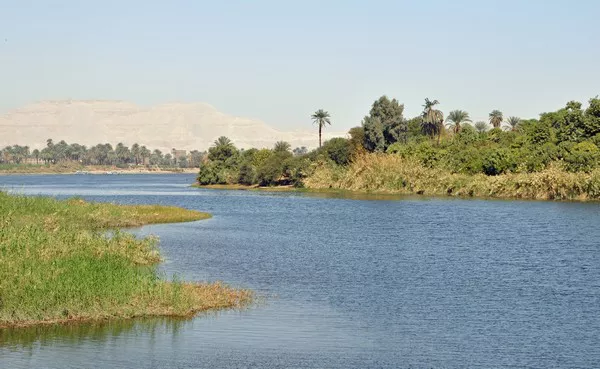Rivers, the lifelines of civilizations, have played a crucial role in shaping the landscapes and cultures of our planet. From the mighty Amazon to the serene Nile, rivers offer a glimpse into the natural wonders of our world. In this article, we embark on a visual journey to explore the top 10 longest rivers, showcasing their beauty, importance, and significance to humanity.
Top 10 Longest Rivers in the World
1. The Nile River: Africa’s Lifeline
Stretching over 6,650 kilometers, the Nile River holds the title of being the longest river in the world. Flowing through eleven countries in northeastern Africa, the Nile has been essential for agriculture, transportation, and sustenance for thousands of years. Its historic significance and cultural importance make it a symbol of life and prosperity in the region.
2. The Amazon River: A Marvel of Biodiversity
The Amazon River, spanning approximately 6,575 kilometers, is the largest river by discharge volume and the second-longest in the world. Flowing through the heart of the Amazon rainforest, this mighty river sustains unparalleled biodiversity, housing countless species of plants, animals, and fish. Its ecological importance cannot be overstated, as it serves as the lungs of the Earth, producing a significant portion of the world’s oxygen.
3. The Yangtze River: China’s Golden Waterway
The Yangtze River, extending over 6,300 kilometers, is the longest river in Asia and the third-longest in the world. Known as China’s “golden waterway,” the Yangtze has been a cradle of civilization and a vital artery for trade and transportation for millennia. Its basin is home to hundreds of millions of people and serves as the economic heartland of China.
4. The Mississippi-Missouri River System: Heartbeat of America
Combining the Mississippi and Missouri rivers, this river system stretches over 6,275 kilometers, making it the fourth-longest in the world. Flowing through the United States, from the northern Rocky Mountains to the Gulf of Mexico, this mighty river system has been instrumental in the development of the American Midwest. It serves as a crucial waterway for commerce, agriculture, and transportation, shaping the landscape and economy of the region.
5. The Yenisei River: Siberia’s Lifeline
The Yenisei River, with a length of approximately 5,539 kilometers, is the fifth-longest river globally and the largest river system flowing to the Arctic Ocean. Cutting through the vast wilderness of Siberia, the Yenisei serves as a vital transportation route and a source of hydroelectric power for the region. Its pristine beauty and rugged landscapes make it a symbol of Siberia’s untamed wilderness.
6. The Yellow River: China’s Cradle of Civilization
The Yellow River, also known as the “Mother River of China,” stretches over 5,464 kilometers, making it the sixth-longest river in the world. Flowing through the heartland of China, the Yellow River has been both a source of prosperity and devastation throughout history. Its fertile plains support intensive agriculture, while its unpredictable floods have earned it the reputation of being China’s “Sorrow.”
7. The Ob-Irtysh River System: Siberia’s Northern Gateway
Combining the Ob and Irtysh rivers, this river system spans approximately 5,410 kilometers, ranking as the seventh-longest in the world. Flowing through western Siberia, this vast river system serves as a vital transportation route, linking the Siberian interior with the Arctic Ocean. Its importance for trade, industry, and ecology cannot be overstated, as it sustains diverse ecosystems and supports local communities.
8. The Paraná River: South America’s Heart
The Paraná River, extending over 4,880 kilometers, is the eighth-longest river in the world and the second-longest in South America. Flowing through Brazil, Paraguay, and Argentina, the Paraná forms a crucial part of the continent’s riverine ecosystem. Its waters support extensive agriculture, hydroelectric power generation, and biodiversity, making it a cornerstone of regional development and conservation efforts.
9. The Congo River: Africa’s Wild Heart
The Congo River, with a length of approximately 4,700 kilometers, is the ninth-longest river globally and the second-longest in Africa. Flowing through the heart of the Congo Basin, the world’s second-largest rainforest, the Congo River sustains unparalleled biodiversity and supports millions of people. Its untamed waters and dense jungles make it a symbol of Africa’s wild heart, teeming with life and mystery.
10. The Amur River: Asia’s Eastern Boundary
The Amur River, spanning over 4,444 kilometers, serves as the natural boundary between Russia and China, making it one of the longest rivers in Asia. Flowing through the Russian Far East and northeastern China, the Amur River sustains diverse ecosystems and serves as a vital lifeline for local communities. Its significance for trade, transportation, and ecology underscores its importance as a symbol of cooperation and shared resources.
Conclusion:
The world’s longest rivers represent more than just bodies of water; they are the lifeblood of civilizations, ecosystems, and cultures. From the ancient Nile to the wild Congo, these rivers shape landscapes, sustain biodiversity, and support millions of people around the globe. As we marvel at their beauty and grandeur, let us also recognize the importance of preserving and protecting these precious natural resources for generations to come.
You Might Be Interested In:



























